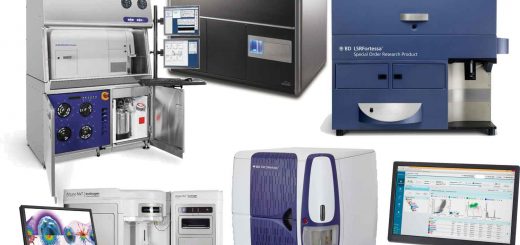Navigation software supports kidney research
Bonn researchers develop method for three-dimensional image processing to solve the mystery of kidney inflammation
Many kidney diseases are manifested by protein in the urine. However, until now it was not possible to determine whether the protein excretion is caused by only a few, but severely damaged, or by many moderately damaged of the millions of small kidney filters, known as glomeruli. Researchers at the University Hospital Bonn, in cooperation with mathematicians from the University of Bonn, have developed a new computer method to clarify this question experimentally. The results of their work have now been published as an article in press in the leading kidney research journal “Kidney International”.
Chronic inflammatory kidney diseases cause serious illnesses, including complete kidney failure, which must be treated with extensive regular blood washing or kidney transplantation. Most of these diseases manifest themselves through protein excretion in the urine. This is because the millions of small filters in the kidneys, known as glomeruli, are damaged and therefore no longer retain protein. It has not yet been possible to determine whether only a few, but severely damaged, or many moderately damaged glomeruli are responsible for protein excretion in the urine. “This is of great importance for therapy and prognosis and could well differ in the many different forms of kidney disease,” says first author Dr. Alexander Böhner, assistant physician at the Clinic for Diagnostic and Interventional Radiology at the UKB, describing the motivation to get to the bottom of this question experimentally in small animal models of kidney disease.
Behind each glomerulus is a tiny channel in which the urine is processed before it reaches the bladder. If protein is detected in this channel, the associated filter must be defective. The challenge now was to identify this glomerulus. “This was previously an impossible task, because the human kidney consists of millions of glomeruli with tubules that wrap around each other in a complex three-dimensional manner,” says senior author Prof. Christian Kurts from the Institute of Molecular Medicine and Experimental Immunology at the UKB. […]
Participating Core Facilities: The authors acknowledge the support from the Flow Cytometry Core Facility.
Participating institutions and funding:
Institute for Molecular Medicine and Experimental Immunology, University Hospital Bonn, Bonn, Germany
Department of Diagnostic and Interventional Radiology, University Hospital Bonn, Bonn, Germany
Institute for Applied Mathematics, University of Bonn, Bonn, Germany
Department of Internal Medicine II, University Hospital Cologne, Cologne, Germany
Institute for Numerical Simulation, University of Bonn, Bonn, Germany
Department of Microbiology and Immunology, Doherty Institute for Infection and Immunity, University of Melbourne, Melbourne, Victoria, Australia
This work was funded by the DFG, in particular the Cluster of Excellence ImmunoSensation2 and the Hausdorff Center for Mathematics at the University of Bonn as well as the Bonfor program for young researchers at the Medical Faculty of Bonn.
Publication: A.M.C. Böhner et al: Determining individual glomerular proteinuria and periglomerular infiltration in a cleared murine kidney by 3D fast-marching algorithm; Kidney International; DOI: 10.1016/j.kint.2024.01.043







